The word is out! Living Stone is moving to Ghent
That's right: next spring, Living Stone will pack its bags and head to the vibrant city of Ghent. But we’re not moving to just any location—we’re setting up at WATT The Health, a brand-new, health-focused business center and event space. Designed to be a hub for innovation and collaboration in the healthcare sector, WATT The Health is where health, sports, and tech businesses come together to connect, inspire, and grow.
- 4 min read
- Oct 9, 2024 2:54:46 PM
How to promote the launch of a new hospital facility or clinic
Start telling your story early, and share lots of information as construction proceeds Launching a new initiative such as a new hospital facility or clinic requires a proactive communications approach in order to make the initiative a success from day one. Here are some suggestions for how to communicate to all your audiences over the lifetime of the project, from the initial planning stages through to your opening events.
- 6 min read
- Feb 10, 2022 5:06:55 PM
How does communication contribute to the success of your hospital?
If you want your stakeholders to listen, you have to prove that your messages have value The perception that key stakeholders like referring physicians and patients have about your hospital is crucial. If it’s good, your stakeholders want to serve or be served by your hospital. On the other hand, if people hold a negative perception about your hospital, it can have an impact on everything from staff retention to patient volumes. A differentiated positioning sharpens the perception of the value of a hospital, increasing its attractiveness in the eyes of all audiences. So how can you boost the perception of your hospital? To answer this question, there are two key areas to explore: How can you develop a relationship with your target groups that is based on trust? And how can you become a reliable partner that people listen to?
- 6 min read
- Jan 24, 2022 5:55:58 PM
What is the service concept of your hospital?
When you make your service orientation clear, everyone knows what to expect from your organization In the competitive hospital world, it’s important that all of your stakeholders – employees, patients, referring physicians, suppliers and others – know what your hospital stands for. Whether your service concept is ‘patient intimacy,’ ‘operational excellence’ or to be a ‘competence center of excellence,’ for example, all of your communications and activities must reinforce and support it.
- 4 min read
- Dec 3, 2021 3:12:29 PM
Commercializing a new medical device? 3 critical success factors to consider
Launching a new medical device is a complicated process. First, of course, you have to come up with a concept. What do you want your technology to do, and how will it do it? There’s that initial period of blue-sky thinking and prototype development, where you refine your technology and determine whether it’s viable. Then, once you decide to move ahead with commercialization, and you’ve achieved your safety and efficacy goals, the pace picks up, and suddenly you’re on a fast track to your launch target date.
- 8 min read
- Jul 1, 2021 4:44:03 PM
Expanding into audio: should you add a podcast to your B2B marketing mix?
Remember “audioblogging”? The first audioblogs, or podcasts, were introduced more than 20 years ago. In the decades since, podcasting has evolved from these clunky first recordings into a billion-dollar industry. In the past five years, it’s ramped up even faster, with podcast listenership doubling worldwide since 2016.
- 5 min read
- Jul 1, 2021 4:43:42 PM
Branding for B2B vs. B2C: a lot more than a one-letter difference
The concept of branding started with our ancestors "branding" cattle so they could easily pick their own animals from a larger herd. Today, a "brand" stands for much more than the mere identification of a product. With a good brand, you can create an emotional bond between your product and your customer.
- 3 min read
- Jan 22, 2021 4:30:38 PM
Healthcare marketing in times of COVID-19 and after: in the midst of chaos, there is opportunity
Hospitals are scaling up to more COVID-19 capacity at the expense of non-COVID-linked activities. Many clinicians will be forced to reschedule their activities from home in anticipation of the decline in Corona numbers. As a healthcare vendor, how do you learn to surf the waves of these (and coming) pandemics?
- 7 min read
- Dec 3, 2020 10:08:55 AM
Change management and big data analytics: need-to-know skills for healthcare marketers
Healthcare changes faster and is more complex than almost any other industry, meaning that healthcare marketers face a unique set of challenges. But change management hasn’t typically been part of the healthcare marketer’s skillset. It’s the same for big data analytics expertise. Increasingly, however, these are emerging as two of the most important skills that a healthcare marketer can have.i
- 6 min read
- Oct 1, 2020 10:35:00 AM
Contact us
Lists by Topic
- B2B marketing (34)
- Healthcare (27)
- B2B marketing strategy (21)
- Content marketing (20)
- inbound marketing (20)
- B2B content marketing (19)
- Healthcare Marketing (16)
- branding (10)
- Digital marketing updates (8)
- Sustainability (8)
- reference marketing (8)
- B2B social media (7)
- Digital marketing strategies (7)
- Social media marketing (7)
- lead generation (7)
- B2B Business Plan (6)
- Customer Reference Program (6)
- Digital marketing trends (6)
- Employer branding (6)
- Social Media (6)
- Visual identity (6)
- analytics tools (6)
- digital marketing (6)
- videomarketing (6)
- Digital marketing plan (5)
- Smarketing (5)
- brand identity (5)
- sales and marketing (5)
- sonar (5)
- Communication (4)
- SEO (4)
- Video marketing (4)
- content (4)
- digitale marketing (4)
- metrics (4)
- online strategie (4)
- showpad (4)
- Content plan (3)
- Customer Reference (3)
- Marketing Metrics (3)
- Marketing automation (3)
- Measure ROI (3)
- Sales Enablement tools (3)
- business identity (3)
- hubspot (3)
- marketing analytics tools (3)
- online marketing (3)
- sociale marketing (3)
- web site (3)
- AI (2)
- B2B marketing plan (2)
- Blogs (2)
- Customer Reference Strategy (2)
- Facebook marketing (2)
- Google updates (2)
- Growth Marketing (2)
- Market your content (2)
- Print (2)
- ROI (2)
- Voice of Customer sessions (2)
- analytics (2)
- brand (2)
- corporate identity (2)
- corporate narrative (2)
- dashboard (2)
- design (2)
- digitale marketing analytics (2)
- logo (2)
- marketing analytics (2)
- marketing trends (2)
- neuromarketing (2)
- positioning (2)
- reporting (2)
- reporting service (2)
- visual (2)
- visual story (2)
- Content promotion (1)
- Digital marketing in China (1)
- Facebook live (1)
- Inbound recruitment (1)
- Inoffensive close (1)
- Market Research (1)
- Marketing ROI (1)
- More online traffic (1)
- New media (1)
- Podcasts (1)
- SEO trends 2018 (1)
- SMART goals (1)
- SMART goals and objectives (1)
- SMART marketing goals (1)
- Sales (1)
- Sales in modern age (1)
- Veeva (1)
- blogging (1)
- brand design (1)
- business (1)
- creating effective content (1)
- infusinar (1)
- internal communication (1)
- loyalty (1)
- loyalty ladder (1)
- marketing manager (1)
- marketing plan (1)
- marketing trends 2018 (1)
- online campaign (1)
- search engine optimization (1)
- storytelling (1)
- tips and tricks (1)
- visual branding (1)


